What mammal do you most want to see in the wild?
I grew up dreaming about seeing the world’s rarest and most elusive animals. I knew that some would be extremely unlikely if not impossible. See a snow leopard? Biologists spent months, years, seeking snow leopards and never caught so much as a glimpse.
In reality, you can now see many of these cryptic creatures, if you know where to travel and search.
Why is it easier to see a jaguar or an aardvark now? In large part, it’s communities of enthusiasts on the web sharing their sightings. Communities of mammal watchers, citizen naturalists and eco-travelers provide trip reports and travel guides, an invaluable source of help when planning a trip.
It’s also true that some wild areas are less wild and more accessible, so there is a bittersweet aspect to finding the wildlife. I take solace in the fact that there are still plenty of mammals that remain out of reach – roaming only the most inaccessible wildernesses (these “grail” mammals will be the subject of a future blog).
But seeking out the species in this post will still be an adventure. For many, you’ll have to put in time and plenty of pre-trip research. For any travel related to wild mammals, Jon Hall’s Mammal Watching web site and forum should be in your bookmarks. Jon has seen all of these creatures, and many, many others.
Top 10 List
-
Aardvark
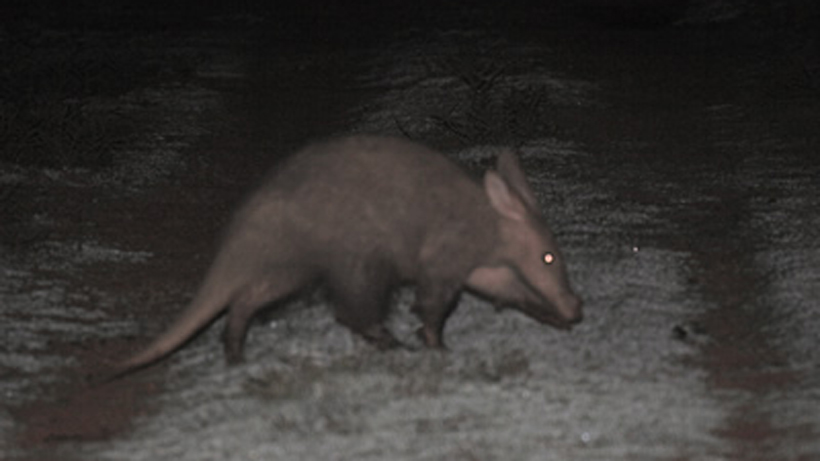
Photo © Jon Hall on mammalwatching.com On my first African safari in 1994, I tripped over a large hole and my guide remarked, “Aardvark.” He must have seen the excited look in my eyes, as he followed with, “We won’t see one. No one ever sees one.”
And this has long been safari lore: go to the great national parks and you will have elephants and lions and cheetahs galore, but spotting an aardvark is like hitting the lottery.
Exactly twenty years after stumbling across that burrow, I found myself looking at an actual aardvark. By design.
Where to See: The Kimberley area of South Africa has a large population of aardvarks and guides and biologists who know how to find them. Marrick Safari Camp and Benfontein Reserve, two private nature preserves, have excellent track records in finding aardvarks (I saw two during four days at Marrick). Night safaris are the name of the game.
While You Wait: These reserves offer some of the most exciting night safaris in the world, with other elusive mammals regularly sighted, including black-footed cat, aardwolf and hedgehog. During the day, visit Mokala National Park with white and black rhinos and a bevvy of interesting ungulates.
-
Snow Leopard
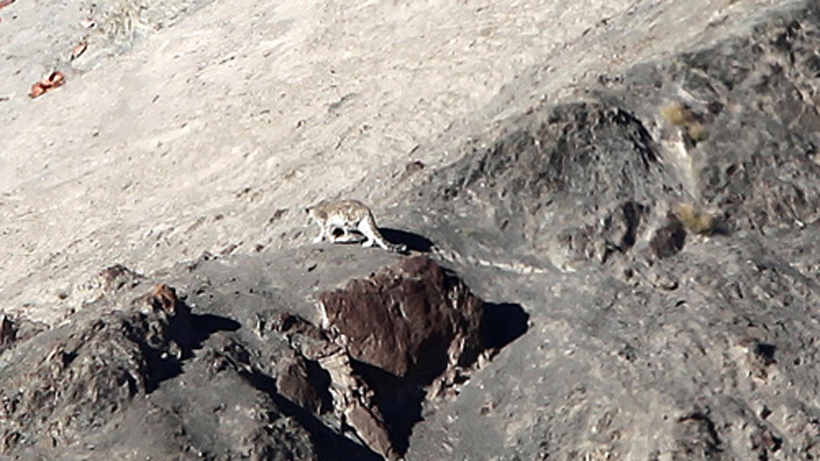
Photo © Jon Hall on mammalwatching.com Author Peter Matthiessen spent an extended trip in the Himalayas with biologist George Schaller seeking snow leopards, as detailed in his award-winning and appropriately named book The Snow Leopard. He failed. This book has led countless naturalists to believe they won’t either.
For many, the snow leopard remains the very symbol of a “grail” animal – inaccessible, impossible, the ultimate lucky sighting. It’s no accident that (spoiler alert) seeing one is the high point in Walter Mitty’s newly adventurous life in the Ben Stiller film.
Here’s the thing: You actually have a reasonable chance of seeing a snow leopard, if you go to the right place.
Where to See: Hemis National Park in Northern India has emerged as the place to see snow leopards. While by no means guaranteed, it appears that most mammal watchers who put in enough time and effort will see one. The Mammal Watching site has ample reports of successful trips. I haven’t been, but it’s high on my list.
While You Wait: If you’re going to Hemis National Park, put all your effort into snow leopards. Sure, there are other interesting Himalayan critters about and the scenery is out of this world. But you’re there for a mystical, elusive cat. Focus.
-
Jaguar
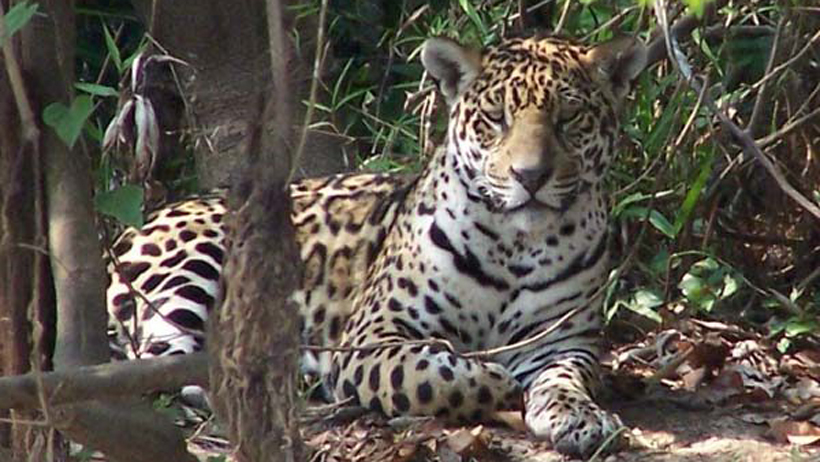
Jaguar, the indomitable beast. Photo © The Nature Conservancy (Matt Miller) Just about every eco-tourist heading anywhere from Costa Rica to Peru wants to see a jaguar. And every good nature guide in those areas will inform them that to see this spotted cat would require extraordinary luck.
Except in one area. I arrived there with the goal of seeing capybaras, the world’s largest rodent. It took about five minutes to see them. And then came a much more unexpected prize: five jaguars.
Where to Go: The Northern Pantanal, at the end of the Transpanteneira Highway. You have to go deep up the rivers, but the jaguars are there.
While You Wait: A naturalist will never be bored in the Pantanal. Thousands of caimans, diverse mammals like giant anteaters and giant otters, and an endless array of water birds are never out of sight. The big cats are icing on the cake.
-
Mountain Lion
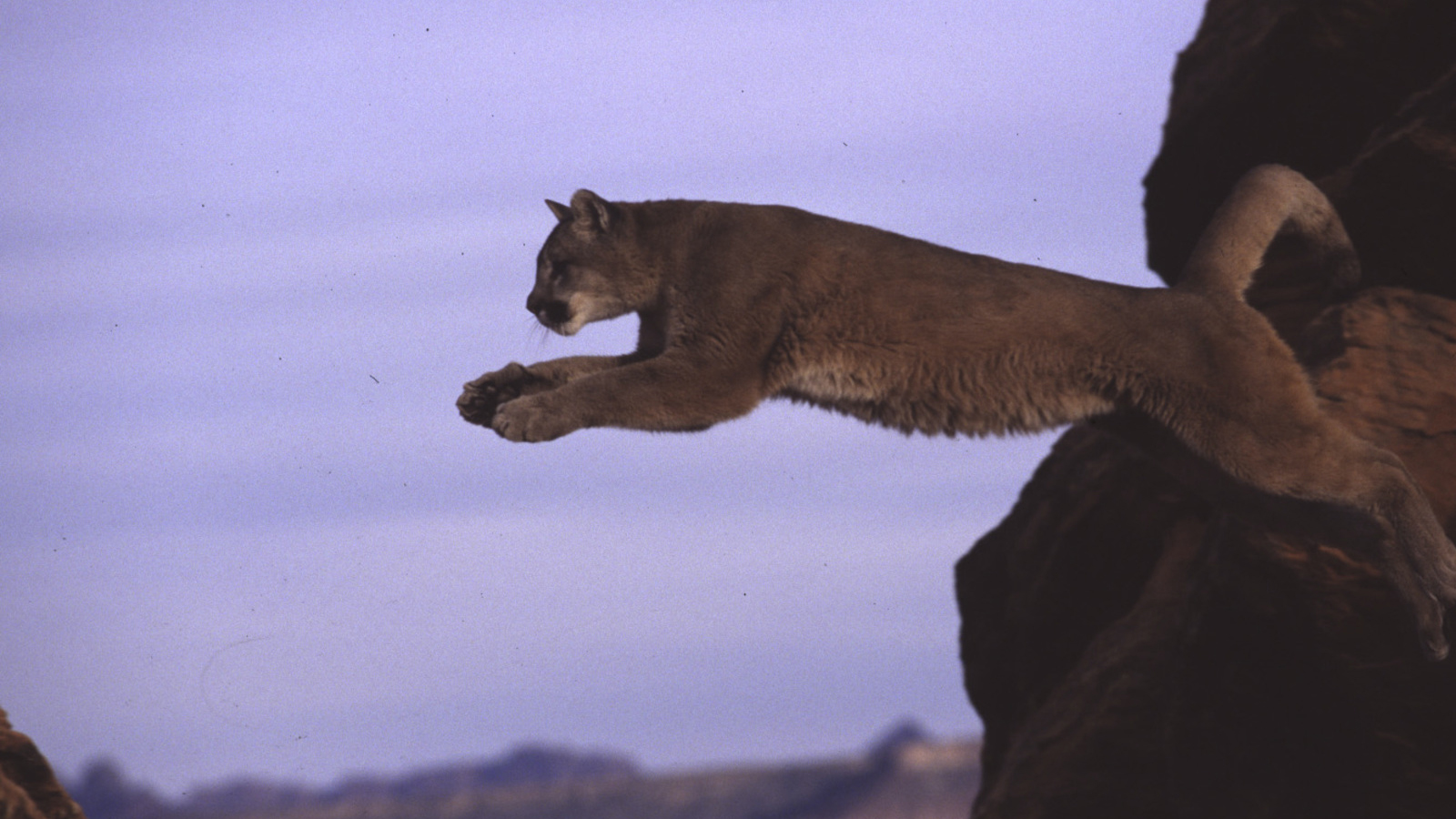
Mountain lion jumping. Photo © Paul Berquist The third elusive big cat on the list is the most common, but also perhaps the most frustrating. In the Rocky Mountain West, it often seems that if you put in the time, you’ll eventually have a sighting. I have friends who have stumbled across them on short day hikes. I also have friends who have never seen one after decades of time in the wilderness.
I’ve come close, finding fresh tracks in falling snow. I want my own lion sighting to be in Idaho, on my home turf. But if you’re more flexible, head south.
Where to Go: Torres del Paine National Park is the only place I know of where you can see a mountain lion without relying on chance. Nature guides in the park often see multiple big cats.
While You Wait: Arguably the most stunning scenery and hiking in the world awaits.
-
Wolverine
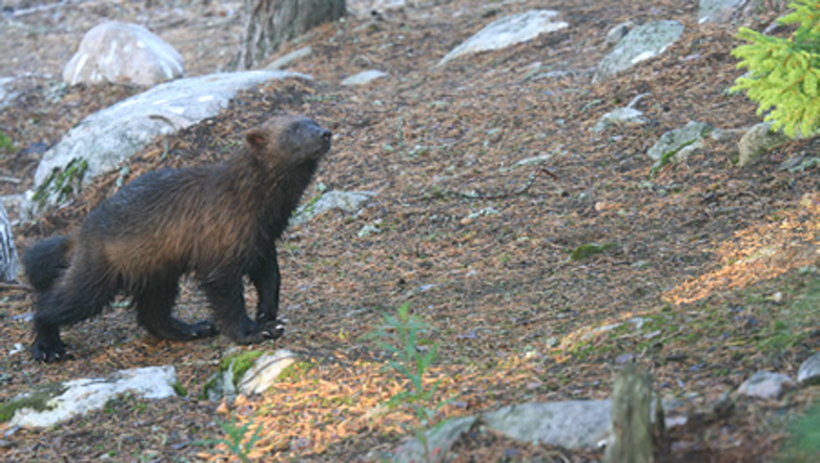
Photo © Jon Hall on mammalwatching.com Elusive. Wide-ranging. Prefers high mountains and heavy snowfall. Lives at low densities. The wolverine’s resume suggests this is one difficult-to-locate critter. And it is. Small numbers still roam big wildernesses, so you never know where one might turn up. There was even one documented in Michigan a few years ago, although that one was likely a zoo escapee.
Where to See: If you really must tick a wolverine off your life list, look into Finland. Yes, Finland. There, nature lodges place blinds over carcasses. This reliably draws in wolverines, so your odds are considerably higher than anywhere else.
I don’t oppose this practice, but let me suggest that seeing a wolverine over bait is somewhat less magical than seeing one in a high-mountain pass. I’ll wait for that chance, knowing it’s unlikely. It’s good to know that some critters will remain beyond our reach. And I could get lucky like my friend Jeff Barney, who saw one on a backpacking trip in Idaho’s Pioneer Mountains.
While You Wait: If you’re in a Finnish blind, there’s a good chance of brown bears and wolves. If you’re in the Rockies or “lower 48,” you’ll be doing a lot of time walking and looking, but you’ll be doing it in great country.
-
Black-footed Ferret
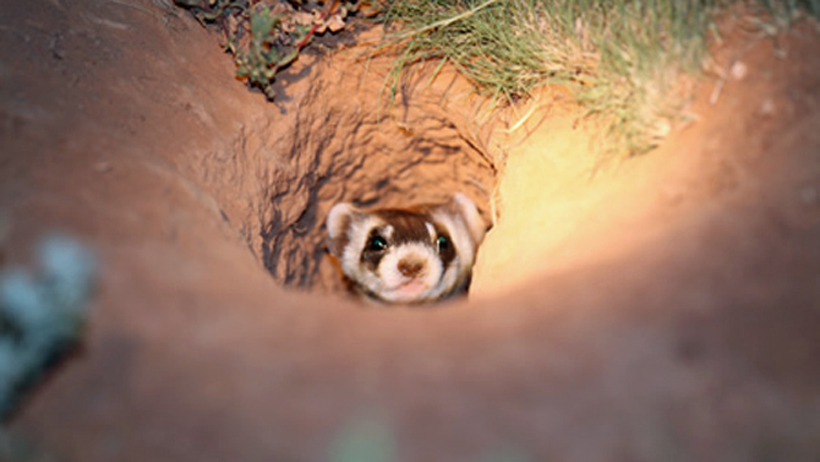
Photo © Jon Hall on mammalwatching.com As a kid, seeing a black-footed ferret was not a goal because at that time they were declared extinct. The astounding story of their rediscovery and reintroduction means that now is the best time to see a wild ferret in decades.
Where to Go: Get your ferret kicks along Route 66, specifically the rangelands near Seligman, Arizona. When I traveled there with Jon Hall, it took us about 15 minutes to locate 3 ferrets. We were able to watch them from just feet away. The Arizona Department of Game and Fish offers ferret surveys that allow even closer views.
While You Wait: American badgers, black-tailed jackrabbits and other nocturnal critters are often spotted on night safaris in this region. If you need a bite to eat, stop at one of the restaurants in Seligman, but be prepared for a heaping dose of Route 66 kitsch.
-
Giant Forest Hog
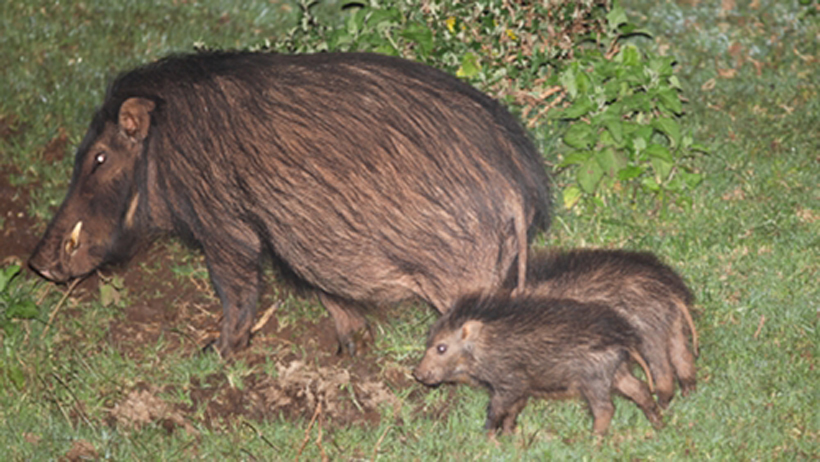
Photo © Jon Hall on mammalwatching.com I acknowledge the giant forest hog lacks the household-name status of the other creatures on this list. But a huge warty hog that lives in African forest: how can you resist? It also has the reputation of being found in the most inaccessible reaches of the rainforest. That may be changing.
Where to Go: Judging from trip reports, an interesting phenomenon is occurring in Kenya’s Aberdare Mountains. For many years, conservationists relocated problem lions in these mountains, away from livestock. An unintended consequence was that the lions ate many forest wildlife, including giant forest hogs and the equally elusive (and cool) bongos.
This practice has been discontinued, and the giant forest hogs are apparently rebounding. Many mammal watchers are getting spectacular sights of these mammals.
While You Wait: Nearby lodges are set over natural salt licks, providing round-the-clock sightings of Africa’s famous wildlife as well as forest specialties.
-
Platypus
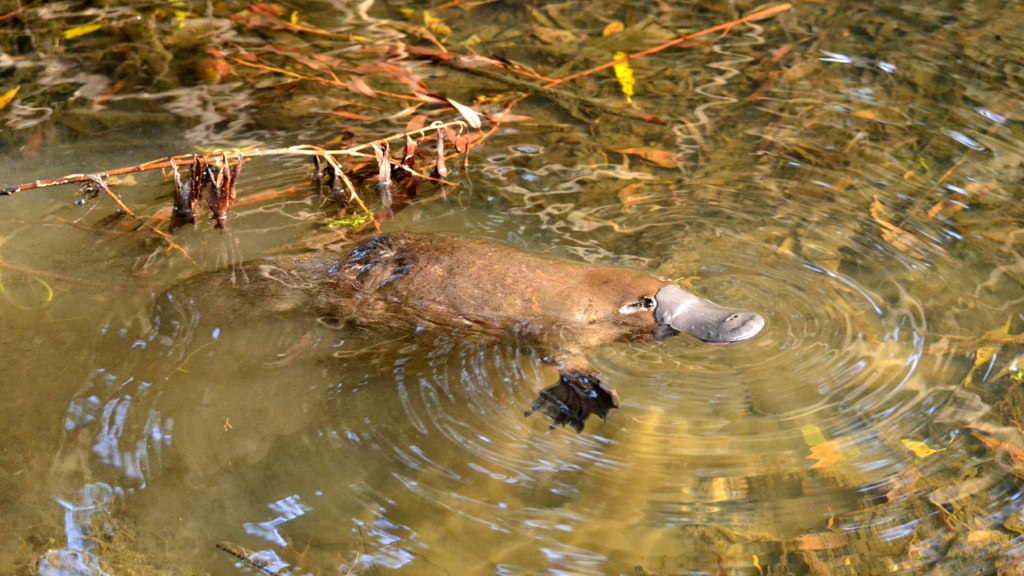
A platypus in Tasmania. Photo © Klaus / Flickr Consult Lonely Planet or other popular guidebooks on spotting Australian wildlife, and you’ll find yourself in a zoo. Most general guidebooks make it sound like seeing wild Australian mammals is difficult at best. Most naturalists know this isn’t true.
The platypus – with its duck bill, egg laying and venomous spikes – is undoubtedly one of the world’s weirdest animals. So much so that early biologists proclaimed it a hoax. Spend a little time away from the cities, and see the real thing.
Where to Go: A number of Queensland parks, large and small, have erected viewing hides at prime spots along creeks. I spotted my platypus at the hide near Yungaburra, in Northern Tropical Queensland. An absolutely spectacular mammal.
While You Wait: Northern Tropical Queensland is marsupial paradise, with plentiful species to see day and night. And there are cassowaries around (although I missed them, but that’s a story for another day). And many other birds. And saltwater crocodiles. If you run out of things to do here, you are reading the wrong blog.
-
Red Panda

Photo © Jon Hall on mammalwatching.com In the past, the red panda has been lumped with raccoons and with bears. It’s neither: the red panda is the only surviving species in its genus. A charismatically bizarre mammal, it prefers high-altitude forests that put them out of reach of many tourists. But a recent conservation program allows red panda viewing while assisting research.
Where to Go: Many birders have luck in China’s Sichuan reserves. But the most reliable method is to join the Red Panda Network during trips that support conservation and research. The organization tracks the animals, so your chance of a close-up encounter is very high.
While You Wait: While it’s tough to see other mammals in the area, the birding is world class. Species like the black-headed shrike babbler and satyr tragopan appear regularly on bird lists.
-
Giant Panda

A young panda scaling a tree in China. Photo © Yong Yange I include this one as a cautionary tale. For years, seeing a wild giant panda – like many critters on this list – was an unrealistic goal. Many biologists who studied them had never seen a wild one.
Then reports started circulating of successful giant panda spotting trips in the Qinling Mountains. Mammal watchers were getting stunning views of this most-famous animal, and they had the photos to prove it.
And then, suddenly, the Chinese government ended giant panda tourism in this area because people were chasing and pressuring the giant pandas.
Some might take away the lesson that you should go to these places while you can. I’ll suggest a more important lesson: Treat these creatures with respect. It’s not a zoo. Your photo is not more important than a species’ survival. Wildlife tourism can be a tremendous boon to conservation, but only if we are not terrorizing the wildlife.
Where to Go: The giant panda is back on the “grail” list, for now. There does not seem to be a reliable spot.
While You Wait: China still offers some wonderful wildlife spotting opportunities for red pandas, golden snub-nosed monkeys and wonderfully weird ungulates like takins and serows.




Great read Matthew.
Im actually going on a world trip to see some of the animals in the wild nature. Primo late 2019, and im looking for places to look at first. I also need a guide for this.
Mikael
from https://greentools.dk/
For those who might stumble on this article (as I did) while researching super elusive mammals, I wanted to add a few thoughts regarding the species listed above based on my experiences traveling as a professional photographer.
For aardvark, I recommend Samara Private Game Reserve in South Africa. I went there specifically for aardvarks a couple years ago and had great success, with encounters all four days (3 daytime sightings with great photo ops on foot, 1 sighting during a night drive). Best time of year is their winter, when the aardvarks are more likely to be out during the day. Now that Samara is introducing lions, I’m not sure how their management of aardvark encounters may change. On a related note, there is a “reliable” (relative term) spot for pangolin sightings in Africa, but given the current wildlife trafficking issues with that animal, it’s probably not appropriate to share it.
Hemis NP is definitely the most reliable snow leopard spot due to the tracking network there, but there are sightings in other nearby areas in northern India. I did a homestay in the small village of Ulley and saw one there (after seeing two in Hemis), while another photographer got one at another nearby village the same day.
I agree that the area around Torres del Paine is the best spot for pumas. I’ve counted 18-19 individuals seen over the course of a week my last two trips there (note that the national park no longer allows off-trail exploration due to the increase in puma tourism). But you can also have a decent chance of seeing the Central American subspecies of puma in Corcovado National Park in Costa Rica. I’ve seen 7-8 over the same number of visits there, and have also had three ocelot sightings in the area. Ocelots are more commonly seen in Brazil’s Pantanal, so even if you don’t visit the baited hides that have been set up there you may spot one during a night drive.
I came to this site, incidentally, while researching giant armadillo sightings. My tour group just had a *daytime* sighting and wonderful photo op in Brazil’s southern Amazon near Alta Floresta. There was actually a courting pair that led to separate sightings for everyone in the group. It’s probably the most elusive medium-large mammal I’ll ever see, as there’s no real reliable spot for them (unless you join a research crew that’s tracking them), so hopefully my first lynx, wolverine, etc. won’t be a letdown when I finally see them. 😉
Max,
Thanks for the additional tips and sighting information. Giant armadillo would be an incredible mammal to see. Happy mammal watching!
I think the list should include the Amur tigers. Elusive, magnificent and tragically doomed.
Thanks for posting this top ten. I have seen 4 out of the 10 in the wild, all at places you highlighted, jaguar, snow leopard, red panda, wolverine, we also saw giant pandas at the new rewilding centre at Dujiangyan but they don’t really count. I wrote trip reports for each of these travels which might inspire your readers…
Currently looking at putting together a trip to look for clouded leopard in Borneo. Other elusive mammals on my most wanted list would be Riverine rabbit, and pangolin! 🙂 Maybe next year! 🙂
Jaguars, Brazil: http://www.birdforum.net/showthread.php?t=151099
Snow leopard: http://safaritalk.net/topic/16206-in-search-of-the-grey-ghost/?hl=%2Bsearch+%2Bthe+%2Bgrey+%2Bghost
Red panda: http://safaritalk.net/topic/13603-sichuan-safari-on-the-sly-november-2014/?hl=%2Bsichuan+%2Bsafari
Wolverine: http://safaritalk.net/topic/15280-finland-into-no-mans-land/?hl=%2Bfinland+%2Binto+%2Bman%26%2339%3Bs+%2Bland
Great read Matt. I’d suggest people should respect animals and not harass them for a photo especially when they are in a zoo and likely to be subjected to that more often.
Thanks for keeping wildlife in the public mind. We were thrilled to see so many Black Rhinos in South Africa and hear of new and effective anti poaching measures. One big surprise was 5 encounters with African Wild Dogs … Kruger National Park had big posters up telling about their serious decline and asking everyone to report all sightings, numbers, location etc.. I had not heard of their precarious situation. Snow Leopard would be high on my list … but given my limited budget I will have to make do with our once in a lifetime trip to encounter and photograph a number of Leopards (of the none snow kind) in South Africa.